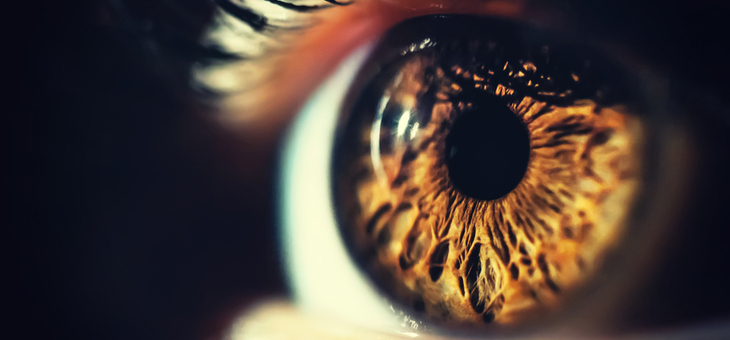Have you ever noticed strange little cobwebs or squiggly lines in your vision? Perhaps they appear to be transparent? They could even appear as little black dots.
They are called eye floaters and are quite common.
Floaters are tiny specks that can be seen in your field of vision, especially when you look at a light-coloured area such as a blue sky or white wall.
They are created when tiny clumps form in the clear, jelly-like substance (the vitreous humour) inside the eyeball.
Eye floaters are suspended in this ‘jelly’, so they move when your eyeball moves. If you try to look directly at them, the floaters may seem to disappear.
Floaters can come in different sizes and shapes. Some floaters look like small dots, while others appear like threads or little hairy clumps.
In most cases, floaters are normal and harmless. However, a sudden increase in their number may indicate damage to particular internal structures of the eye. This requires professional attention.
The vitreous humour in the eye helps maintain the shape of the eyeball, and acts as a shock absorber when the eye is pushed out of shape.
The vitreous is more than 98 per cent water but is two to four times more viscous.
Floaters are suspended in the vitreous humour, which means they move around. Floaters in your peripheral vision tend to go unnoticed, but sometimes particles can cross across the central vision.
Some characteristics of floaters:
- They can be different shapes, such as tiny spots, flecks, clear little bubbles, threads or webs.
- They are particularly visible when looking at a light-coloured area, such as a blue sky.
- The floaters move as the eyes move, often with a slight lag.
- Large floaters can present as diminished areas of vision, but this is very rare.
If a floater troubles you, you can try looking up and down, and from side to side, to swish the vitreous humour and move the floater out of the way. However, this does not always work.
While some people find floaters troublesome, they are typically harmless, and surgery is not required.
Floaters increase with age
The retina is a thin film that lines the inside of the eye. It is made up of light-sensitive cells known as rods and cones. Rods and cones detect shape, colour and pattern, and pass the information to nerve fibres. Nerve fibres collect in a bundle at the back of the retina, forming the optic nerve. Visual information is relayed from the retina to the brain via this optic nerve.
Floaters tend to increase with age because the vitreous humour pulls slightly away from the retina and degenerates with advancing years. This separation of vitreous humour from the retina can cause small shreds of jelly to break off and form more floaters.
At first, this can be irritating. Eventually, the brain can become accustomed to the floaters and may decide not to ‘inform’ you of their presence.
In some people, the age-related detachment of the vitreous humour from the surface of the retina could cause tears in the retina. Tiny droplets of blood may appear as a fresh crop of floaters. Short-sighted people and those who have undergone surgery for cataracts are at increased risk of tears to the retina.
Untreated retinal tears can lead to retinal detachment. In this condition, the retina comes away from the back of the eyeball. Permanent loss of vision can result if immediate treatment is not sought.
While floaters are usually harmless, you should seek immediate professional attention if you experience a sudden increase in floaters, particularly if they are accompanied by flashing lights, or a new big floater. This is especially important if you are short-sighted or have had an operation for cataracts.
Your eye care professional will use specialised equipment to examine both the vitreous humour and the retina of your eye, to determine whether there has been any tearing or detachment of the retina. Retinal detachment is treated with surgery.
Have you noticed floaters in your field of vision?
Related articles:
Beware health fund ‘rip-offs’
Caterpillars hold key to arthritis cure
Is it time for universal dental care?
Disclaimer: This article contains general information about health issues and is not advice. For health advice, consult your medical practitioner.

